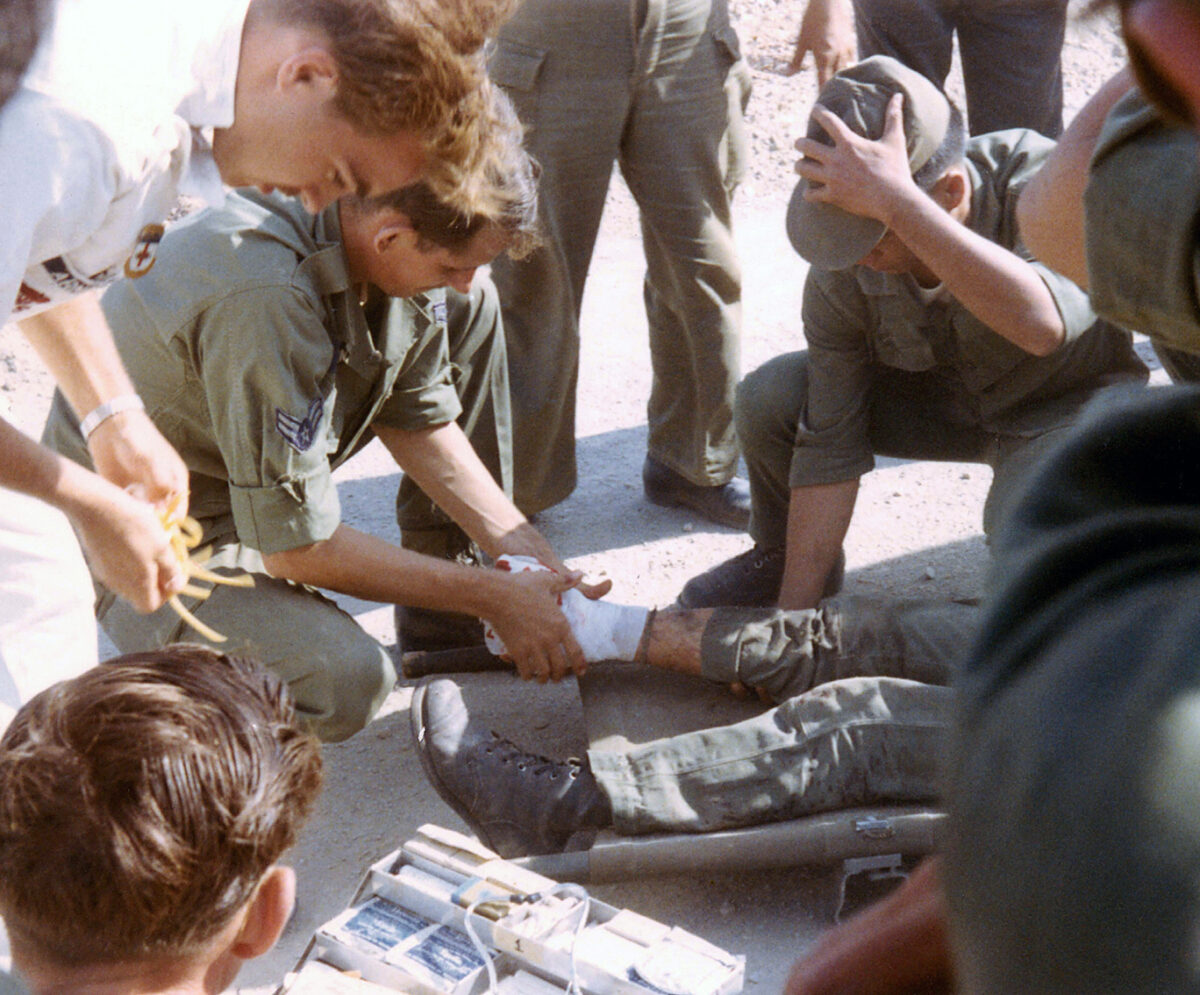In March 1966, an ARVN soldier became stranded in a minefield just outside Bien-Hoa Air Base after tripping a small anti-personnel mine. Part of his foot blew off, leaving him wounded and needing quick medical attention. Getting to the wounded soldier would take some serious thought.
The 38th Aerospace Rescue and Recovery Squadron based on Bien-Hoa sprang into action. Experienced in getting wounded aircrew out of tricky situations, they devised a plan. One of the pararescuemen suggested: “No problem, just lower me down on the penetrator. I’ll straddle the guy, pick him up, and then you can lift me up.”
It sounded like an easy solution, but the downwash from the HH-43 “Husky” helicopter could potentially set off another mine. They decided it was worth the risk.
The helicopter hovered over the wounded soldier, and the pararescueman lowered. They lifted the pair up and gently brought them within the safety of the base. Lowered to the ground, the airman immediately began working on the soldier’s foot.
This photo was taken by one of the soldiers in the crowd that assembled, watching the drama play out.
The pararescueman who volunteered for the tricky rescue was Airman First Class (A1C) William “Pitts” Pitsenbarger. He would receive the Airman’s Medal and the Republic of Vietnam Gallantry Cross with a Bronze palm for this action.
Only a month later on April 11, “Pitts” lowered into another dangerous situation during a firefight some 20 miles northeast of Saigon. As was often the case, he volunteered to be lowered to the ground to treat the wounded soldiers. His bravery that day cost him his life, earning him a posthumous Air Force Cross that was upgraded to the Medal of Honor 36 years later.





